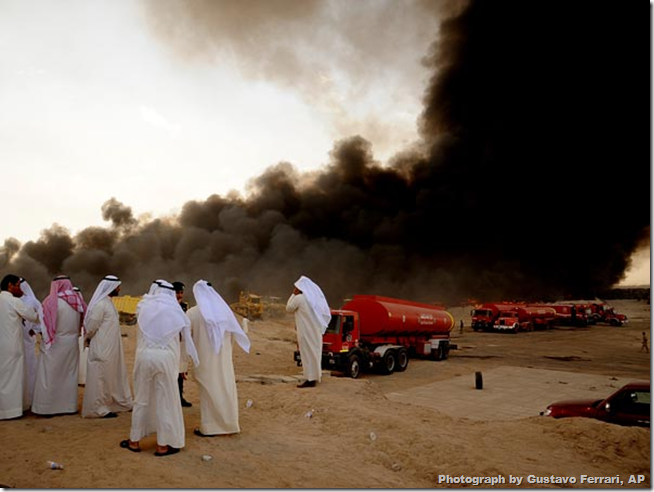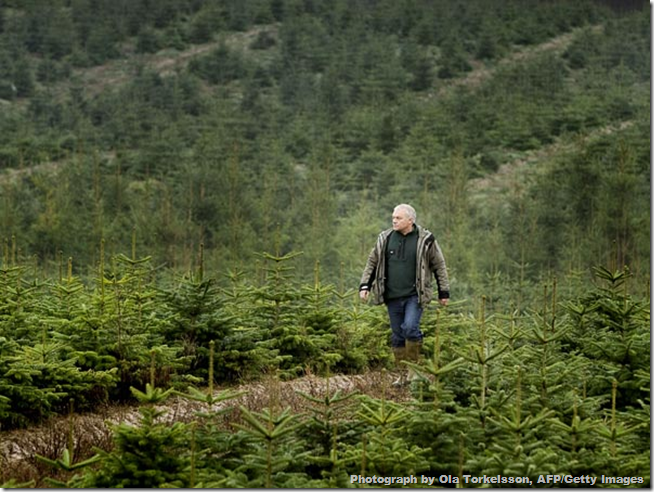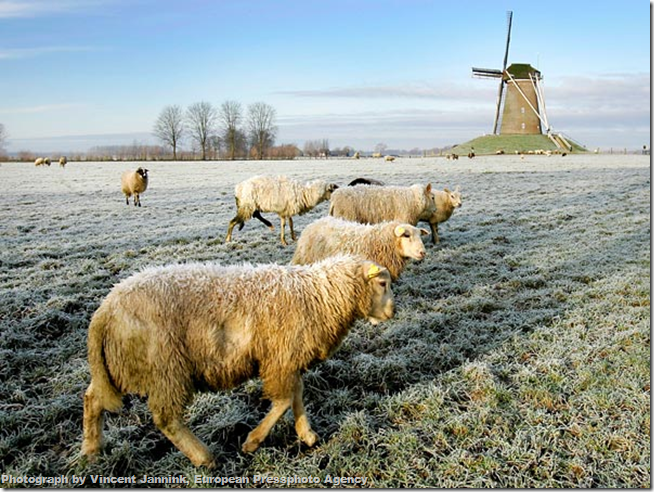Pictures: Ten Countries With the Biggest Environmental Footprints
By Rachel Kaufman, National Geographic, 24 May 2012.
By Rachel Kaufman, National Geographic, 24 May 2012.
1. Qatar
Qatar's carbon emissions per capita are the highest in the world and three times as high as the United States'.
According to the Living Planet Report, produced by the World Wildlife Fund and the Global Footprint Network, among others, if every human being lived like the average Qatari, the Earth would need nearly five times more resources than it has. [Note: Links to the aforementioned Living Planet Report are provided at the end of this post.]
As it is, humans are using 50 percent more resources than the Earth can replenish in a year. In other words, humans use the equivalent of 1.5 planets per year. By 2030, humans will use the equivalent of two planets each year.
When the world's leaders convene in Rio de Janeiro in June [the Rio+20 Conference], the planet's "biocapacity" - how much life the Earth can physically support - will surely be a topic of discussion. And Global Footprint's data show that humans all around the world are using more resources than there is biocapacity to support them.
Why is Qatar highest on the list of consumers? The oil pumped from the desert country's rich sands isn't counted against the country's consumption (unless it's burned in-state), but energy usage is sky-high in this Middle Eastern country. Citizens are provided with free electricity and free water, which the Guardian's Fred Pearce described in a 2010 column as "liquid electricity," since water in the Middle East is often produced by desalinating seawater, an energy-intensive activity. (In the above photo, taken in October 2011, window washers return to the ground along the facade of the 52-story Tornado Tower.)
Energy demand is rising by 7 percent a year to run the desalinators and air conditioners that maintain life in the desert and the natural gas production equipment that funds it.
— Rachel Kaufman
2. Kuwait
Above photo, burning tires in a dump pour black smoke into the air as fire-fighters and officials look on.
The tire fire, which broke out in Rhayya, 75 miles (120 kilometres) north of Kuwait City, burned for more than ten hours last month.
As in nearby Qatar, gas prices in Kuwait are among the lowest in the world, while GDP is among the highest. This, coupled with a lack of public transit infrastructure, makes road travel the sole means of mobility for both citizens and businesses moving goods. According to the Global Footprint Network, the average Kuwaiti uses 22 times more resources than the country provides per person.
3. United Arab Emirates
Despite being the world's fourth largest oil exporter (behind Saudi Arabia, Russia, and Iran), the United Arab Emirates has publicly pushed for a renewal of the Kyoto protocol (the agreement among industrialized nations to cap emissions), announced a plan to increase renewable energy production, and even launched a 1-gigawatt concentrated solar generation project.
Yet Dubai, a city of 1.5 million people (many of whom are immigrants seeking their fortunes, like the workers pictured above), the world's largest shopping mall, and an indoor ski resort, currently gets all its energy needs from the burning of natural gas, which is why it ranks third on Global Footprint's list.
4. Denmark
Above photo, a Danish farmer surveys his Christmas trees shortly before they are sold in December 2008.
Denmark's carbon emissions are half that of the United States', but its cropland (the amount of viable land that can be used to produce crops) requirements are much higher. Because so much meat is eaten per capita in Denmark, the country must import a large amount of grain - so much that it would take up 215,000 square feet (2 hectares) of land per person, or 2.5 times more land than the country has.
5. United States
Above photo, New York City twinkles at night, with Fifth Avenue and Broadway clogged with cars.
If everyone lived like the average American, the Earth's annual production of resources would be depleted by the end of March, the Global Footprint Network's report said.
Americans' love of road trips, suspicion of public transit, and growing energy demands fuel the country's high per-capita carbon emissions.
6. Belgium
Above photo, a Belgian farmer drives his tractor in this undated photo.
Belgium's biocapacity of cropland is extremely low, so much of its food must be imported. This begins to explain Belgium's high ranking on Global Footprint's list.
7. Australia
Above photo, a lumberman cuts down a karri tree, a type of eucalyptus, in Western Australia.
Australians emit 28.1 tons of carbon dioxide equivalent per person, one of the highest per-capita rates in the world. In addition, the country's demand for wood, food, and pasture uses the equivalent of 753,000 square feet (7 hectares) of land per person, nearly four times greater than what is available on average around the world.
8. Canada
Canada's biocapacity is 14.92 hectares per capita, 5.5 times average global consumption. So if the world's resources were as abundant everywhere as in Canada, we'd have more than enough to go around.
Even so, Canada's cities are energy hogs. The country has the seventh highest rate of carbon dioxide emissions per capita. Total greenhouse gas emissions in Canada rose 24 percent between 1990 and 2008.
9. The Netherlands
Sheep near a village in the Netherlands will go toward feeding Dutch citizens, yes, but for the most part, the Dutch consume more than they produce.
The small country, with its high population density and relatively little land area for crops and pasture, consumes six times more resources (energy, food, and more) than it is able to produce, and about three times more than the Earth overall is able to sustain.
10. Ireland
Above photo, a fuel farm on the outskirts of Dublin, Ireland, grows rapeseed (canola) plants to ultimately make biofuel.
In 2008, however, Ireland's greenhouse gas emissions per capita were the second highest in the European Union.
Agriculture is the largest source of emissions, but emissions from vehicles have more than doubled since 1998.
However, there have been improvements in recent years: 2009 was the second year in a row in which transport emissions declined, and an increase in renewable sources of energy in the early 2000s reduced emissions from the energy sector by 10 percent in 2009.
[More information: 1. Living Planet Report, 2. Living Planet Report - Summary Booklet. Documents download via WWF Global.]
Top image: Living Planet Report 2012 cover - see above link.











No comments:
Post a Comment
Please adhere to proper blog etiquette when posting your comments. This blog owner will exercise his absolution discretion in allowing or rejecting any comments that are deemed seditious, defamatory, libelous, racist, vulgar, insulting, and other remarks that exhibit similar characteristics. If you insist on using anonymous comments, please write your name or other IDs at the end of your message.